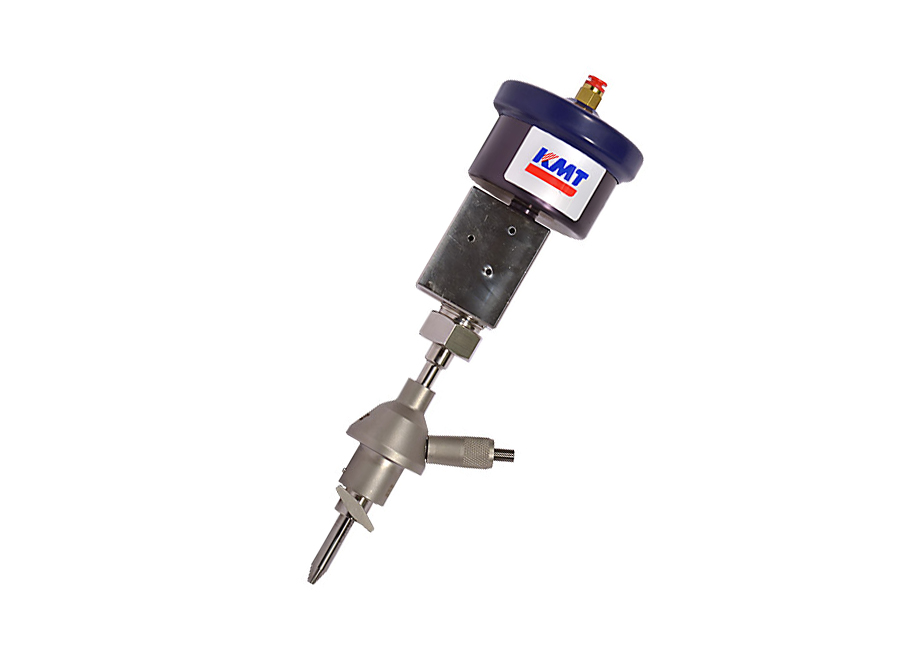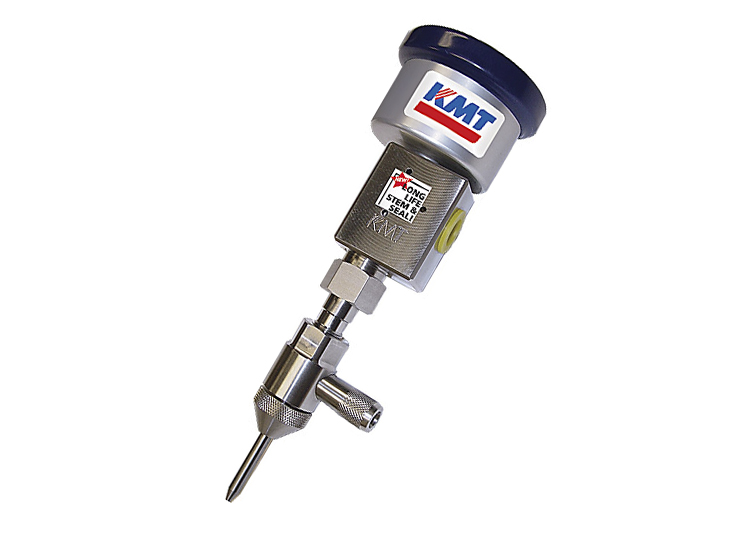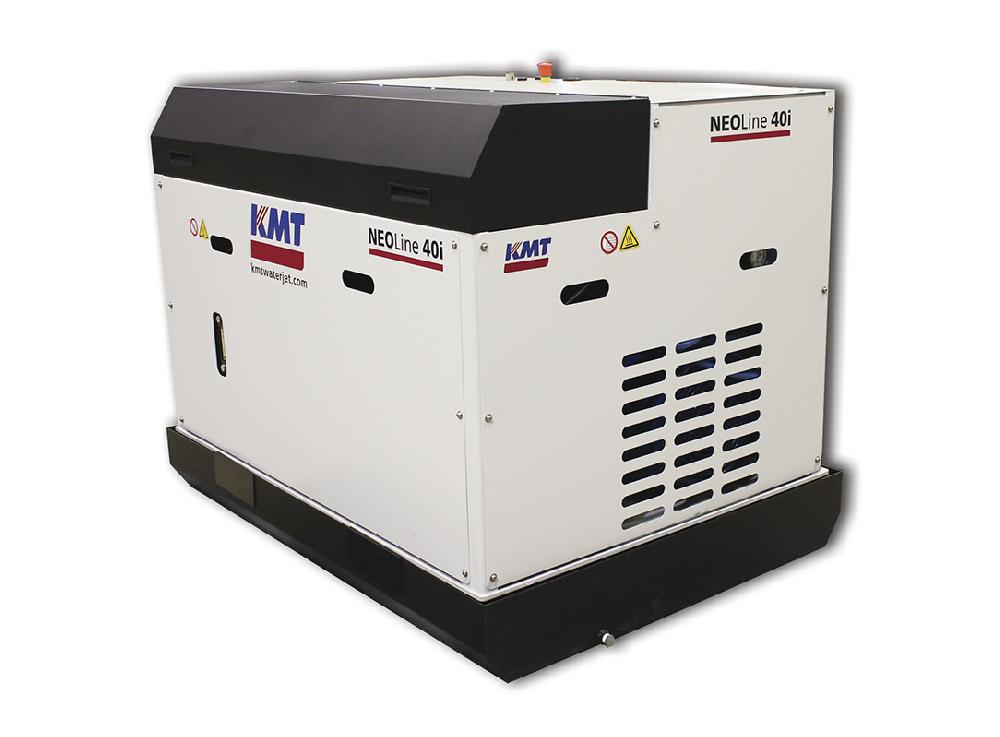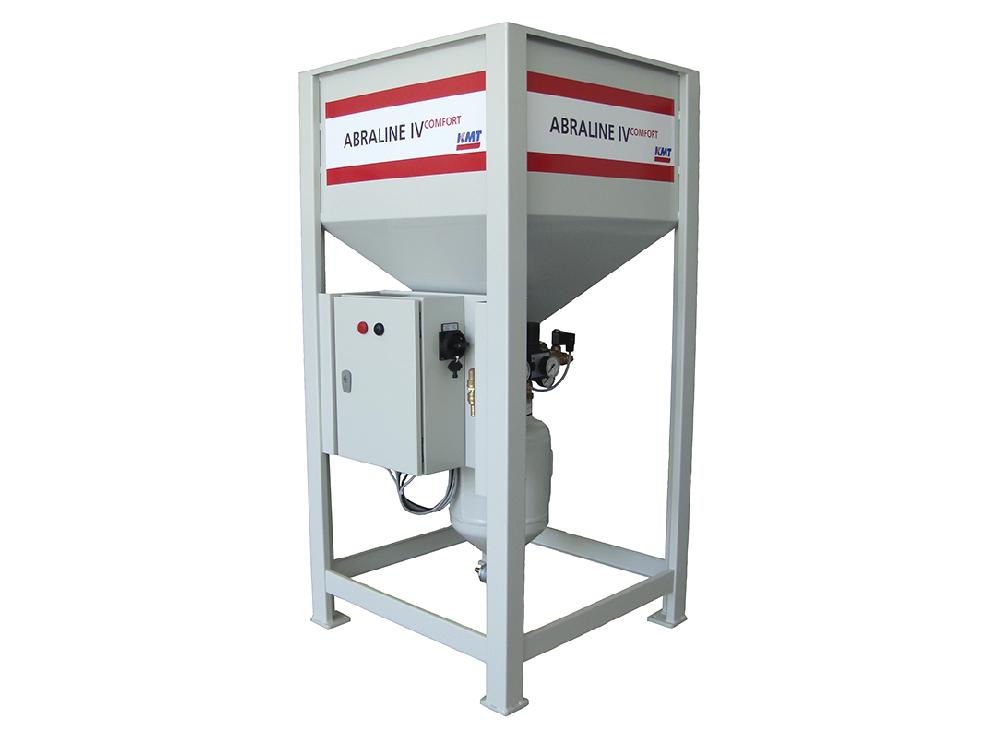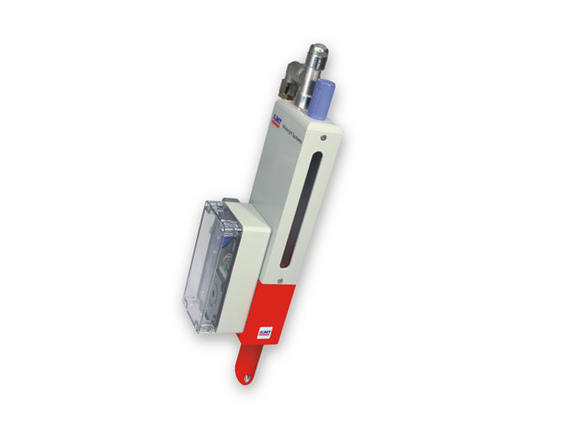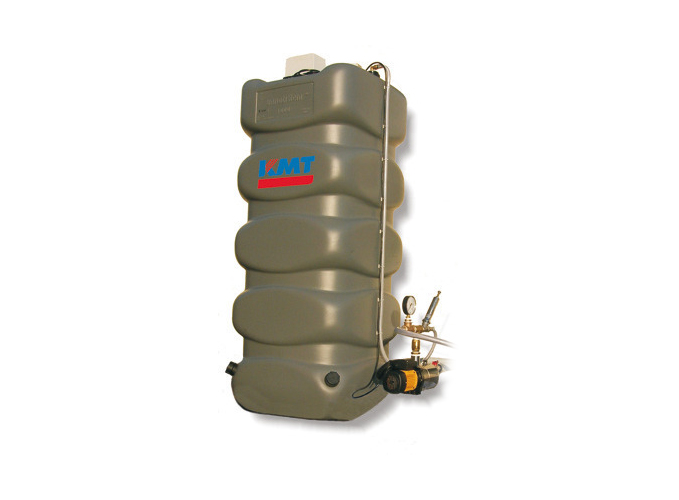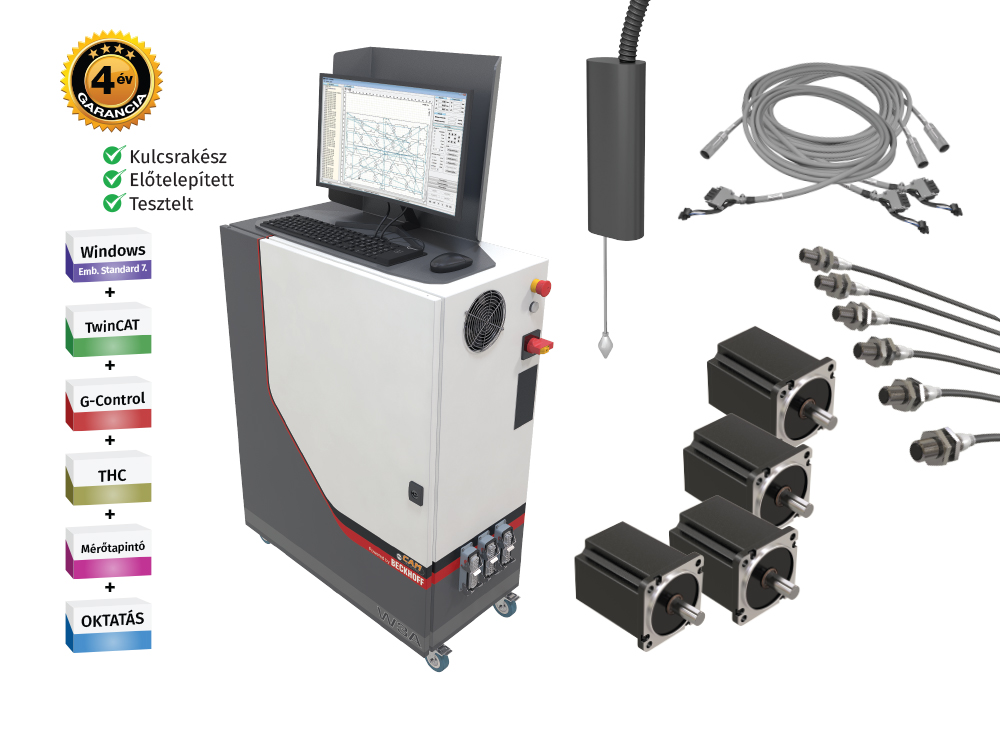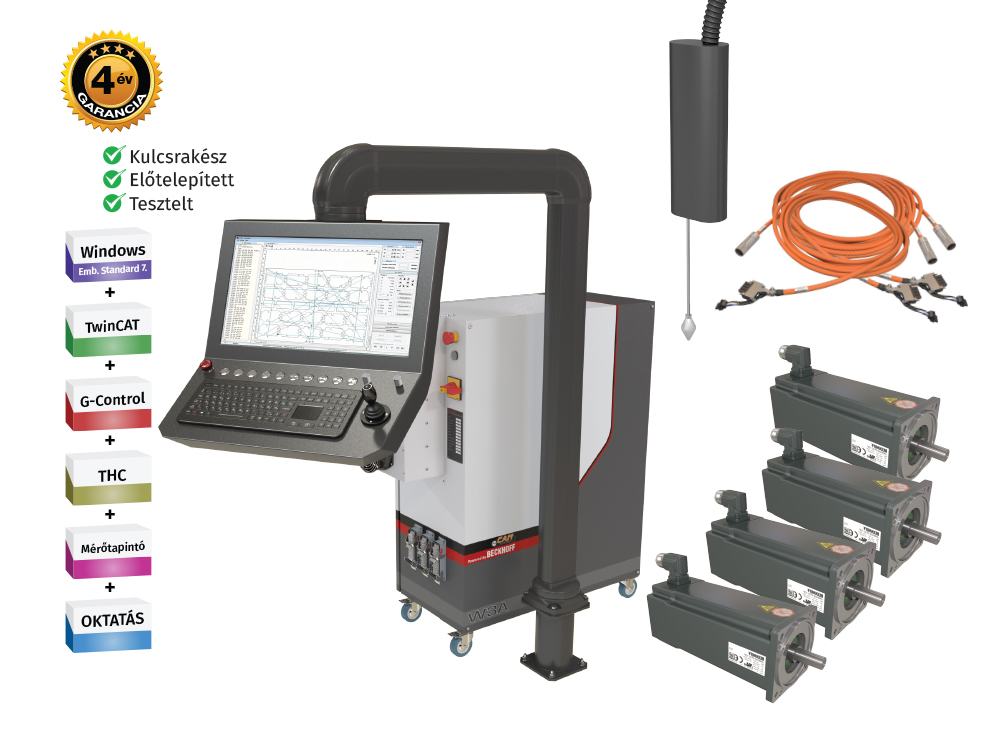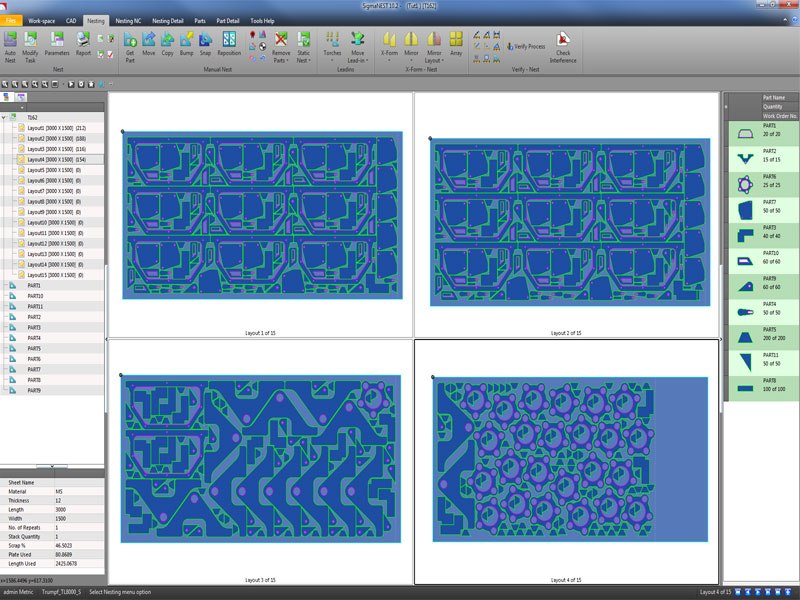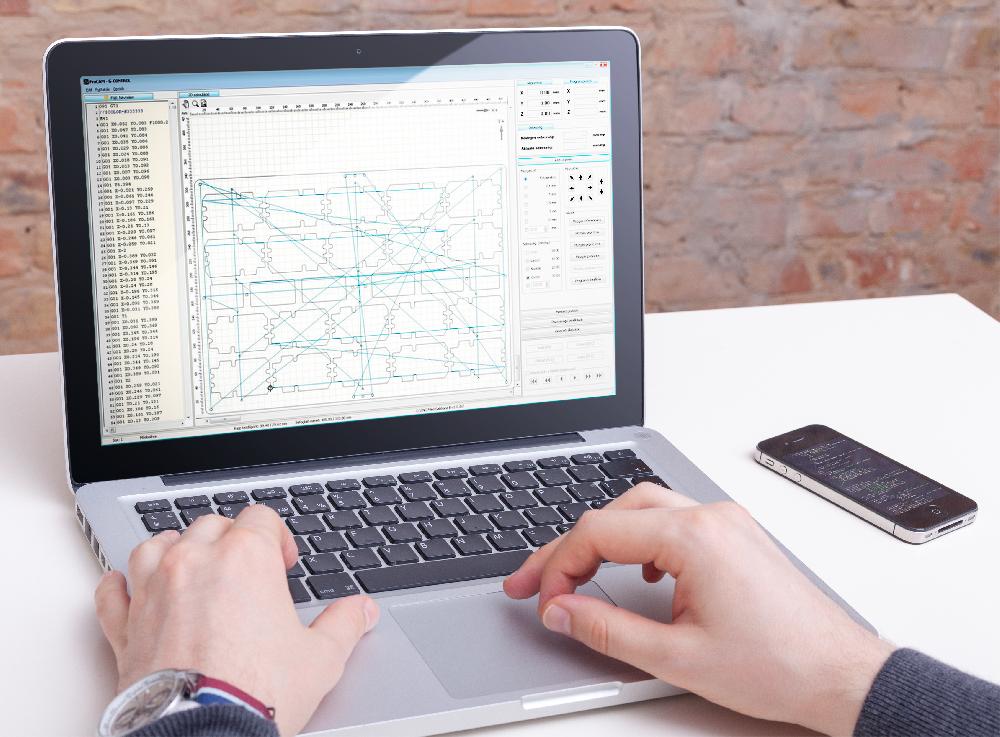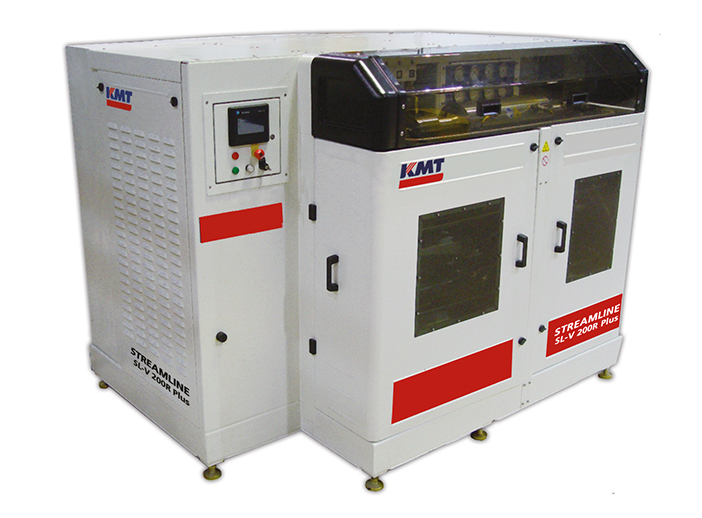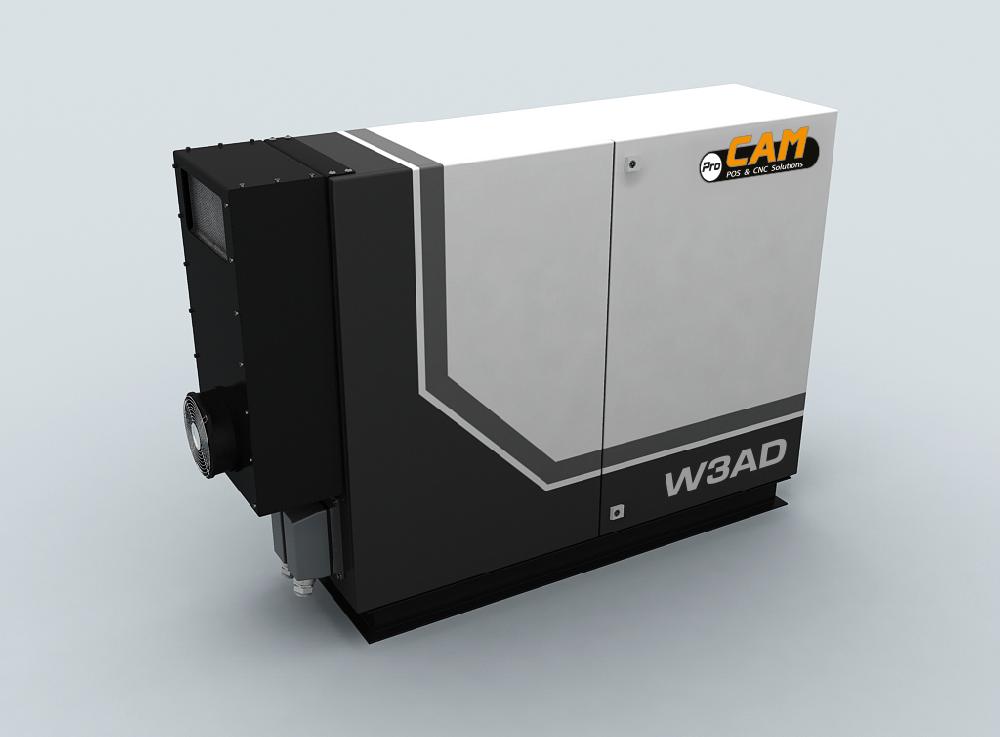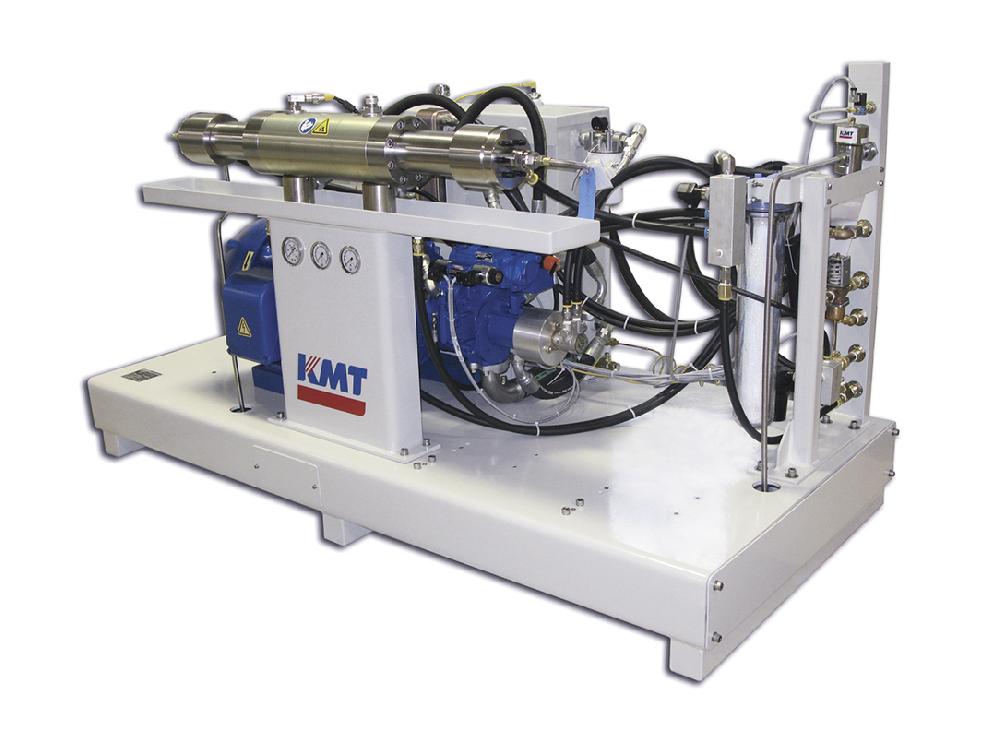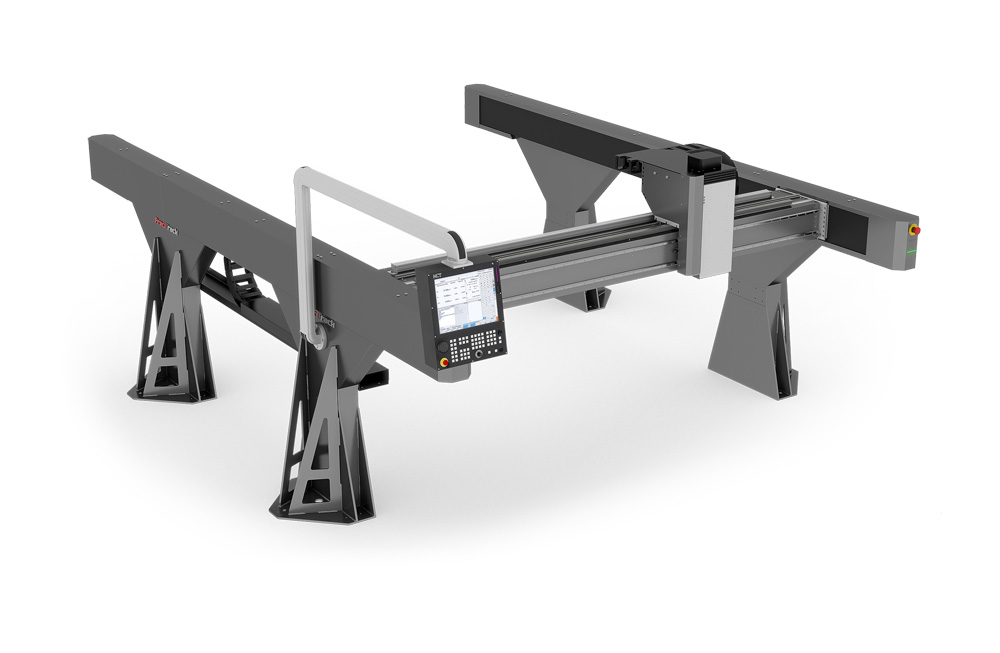One-, two-, or three-dimensional waterjet cutting and robot applications
Due to the universal applicability of the waterjet cutting technology, it is used for a very wide range of cutting applications. Consequently, there is a big variety of available waterjet cutting systems:
- 1d slitter systems for cutting web material
- 2d cutting tables for cutting sheet material
- 3d robot applications for complex three-dimensional outlines
- Further customized solutions
One-dimensional cutting |
Two-dimensional cutting |
|---|---|
|
One-dimensional systems are mostly used for cutting web material. The material is placed on a conveyor chain, which carries it at high speed through a portal construction. This construction is equipped with several cutting heads. The space between the cutting heads determines the width of the material stripes. As these kinds of systems are often used in multi-shift operation, high cutting speed and reliability of the production process are very important.
Robot applications for three-dimensional cuttingEspecially in the automotive and mechanical engineering industry, there are complex requirements which can only be realized by a system for three- dimensional cutting. For these kinds of applications, the cutting head is installed on a robot arm and run along a three-dimensional workpiece for trimming the material or cutting holes. Robot systems are often equipped with rotating shuttle tables. These enable the time-saving loading and off-loading of the system while simultaneously cutting workpieces in the cutting box. Typical applications are: Abrasive cuttingEngine components made in titanium, aluminum and stainless steel; turbine blades; marble and other decorative stone Pure water cuttingComponents for car interiors such as carpets, door panels, bumpers, dashboards, instrument panels, glove compartments, etc. |
The most frequently used system is the 2D cutting table (see picture on the next page). For cutting intricate outlines, the cutting head is guided by a central CNC control system along the x- and y-axis. Very often, the z-axis (height) is adjustable, too. That is necessary because the cutting head has to be positioned very close to the material to obtain optimal cutting results. This type of system is the ideal solution for the quick production of different workpieces from different sheet materials. A 5-axes-system enabling the cutting head to tilt via a rotation axis can realize angular and cone-shaped cuts as they are necessary for weld preparation. Also available are systems for cutting holes in pipes or tubes. The main system features include high cutting speeds and the ability to cut a large number of parts at the same time – very often, these systems are equipped with multiple cutting heads for multiplying the production output. These systems are also adapted for mirrored cuts or reverse cutting. 2D cutting tables are available in various sizes. KMT – the Heart of Waterjet CuttingFor over 40 years now, KMT's heart has been beating for waterjet cutting. You can benefit from the experience and expertise: Just let us know about your personal cutting demands. Taking your requirements into account, we will work out a cutting system concept which best fits your needs so that you can run your production efficiently and economically. 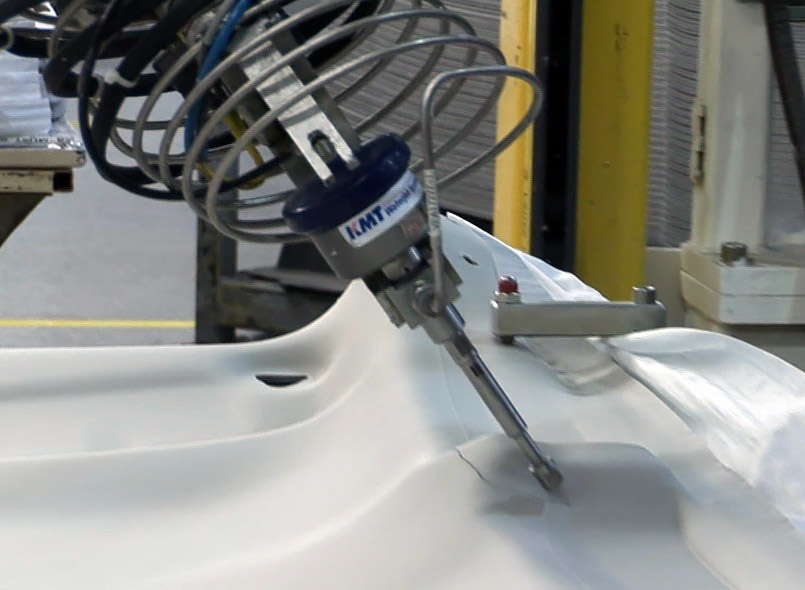 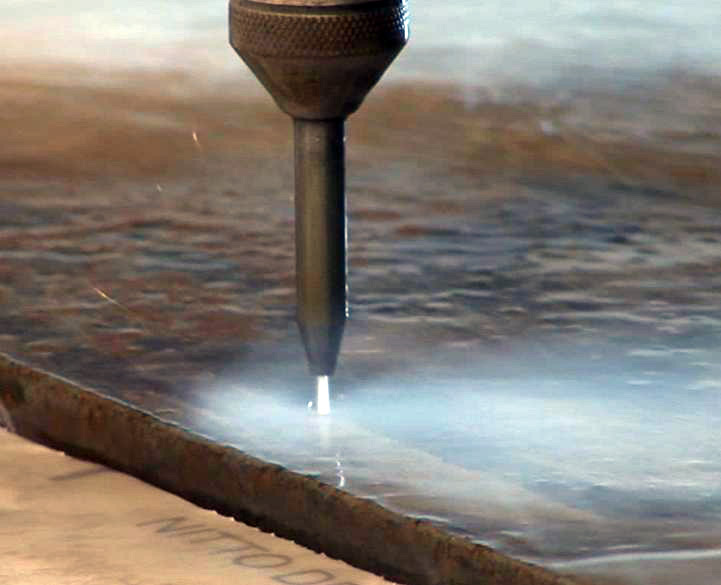 |
About the technology |
The advantages of waterjet |
|---|---|
|
In the past few years the demands for industrial cutting have drastically increased. These demands indicate more than higher cutting speed or productivity- an ability of high precision cutting of complex shapes is also needed while maintaning a good edge quality. The waterjet cutting technology offers a unique method to improve the level of automation as it cuts almost all materials in a cost-effective way. With the waterjet cutting technology almost every material can be cut at least until a thickness of 100mm. The cutting process does not involve a heat input, so the undesired effects of thermic processes such as warping and changes in material structure are eliminated. Even the reflective, heat-sensitive materials can be cut in high quality with minimum waste. The main units of a waterjet equipment: high pressure pump, high pressure pipes and connections, cutting nozzle, worktable, guiding system, energy absorber tank, abrasive conveyor and loader unit. Waterjet cutting is based on a technology of a small diameter, very high-pressure water stream that cuts through the material at an extremely high speed. The technology also involves the application of special abrasive materials that are fed into the system by the abrasive loading unit. The water mixed with the abrasives bombards the cutting surface with a very well focused, high precision stream thus cutting along an accurately defined line. Due to the density and size of the abrasive particles, the cutting edge is also very precise and uniform. By the proper density ratio it is possible to get a surface quality similar to whetting. During waterjet cutting there is no burrs and the heating of the work piece is at minimum (25-40 °C). It is also important to mention that this is a cutting technology that does not change the inner structure of the material along the cutting edges. The explanation of this is simple: there is no significant heating as the cutting nozzle is the cooling device, as well. This especially important in case of cutting special alloys as there is no need for an additional roughing. This way it is possible to produce stronger, safer and more precise parts in many industrial fields.
Why this solution?The main advantage of waterjet cutting compared to laser cutting is that it is suitable for cutting almost every material regardless of their structure and the maximum cutting thickness is very large, the system is capable of cutting even stone or metal plates of 150 mm! So far this is not possible with a laser cutting system and it's application would not be economical, anyway. Trimming technologies are not suitable for the cutting of solid stones, glass or foamed materials like granite, marble, polystyrene, rubber and other foamed materials. These are practically uncuttable with traditional cutting machines as opposed to waterjet cutting. The materials cut by waterjet cutting are not exposed to thermic tension therefore there is no surface hardening, warping, dripping sludge or potentially harmful gas emissions. Cutting plastics with laser can produce toxic gases that have to be removed and treated. The materials cut by waterjet cutting are not exposed to thermic tension therefore there is no surface hardening, warping, dripping sludge or potentially harmful gas emissions. Cutting plastics with laser can produce toxic gases that have to be removed and treated. In case of plastic coated metals waterjet cutting is often the only method of cutting as it does not have a negative influence on the surface. Cutting materials like titanium, stainless steel, copper and aluminium by laser can cause a lot of problems, as well. It is also impossible to cut by laser certain fiber-enhanced materials or stones. |
Cuttable materialsWith waterjet cutting it is possible to cut every material used in the industry regardless of their hardness and rigidness. It is also possible to use this technology on heat inductive materials or materials that are do not tolerate excessive heat input. Among many other materials: almost every metal and alloys, almost every kind of stone, glass, wood, foamed or pressed materials, rubber, plastic, ceramics. Fields of applicationHigh pressure pure water and abrasive cutting can be applied in several fields of the industry.
|
Spare-parts cut by waterjet
Comparison Chart
| Cuttable materials |
Flame | Laser | Milling | Plasma | Waterjet |
|---|---|---|---|---|---|
| Mild steel | x | x | x | x | x |
| Carbon steel | x | x | x | x | |
| Stainless steel | x | x | x | ||
| Aluminium | x | x | x | x | |
| Titanium | x | x | x | x | |
| Chrome and cobalt alloy | x | x | x | ||
| Copper | x | x | x | x | |
| Bronze | x | x | x | ||
| Zink | x | x | x | ||
| Plexi | x | x | x | ||
| Poly carbonate | x | x | |||
| Foamed materials | x | x | x | ||
| PVC | x | x | |||
| PET | x | x | |||
| Other plastics | x | x | x | ||
| Rubber | x | ||||
| Wood | x | x | x | ||
| Marble, terazzo | x | x | |||
| Granite | x | ||||
| Glass | x |

























